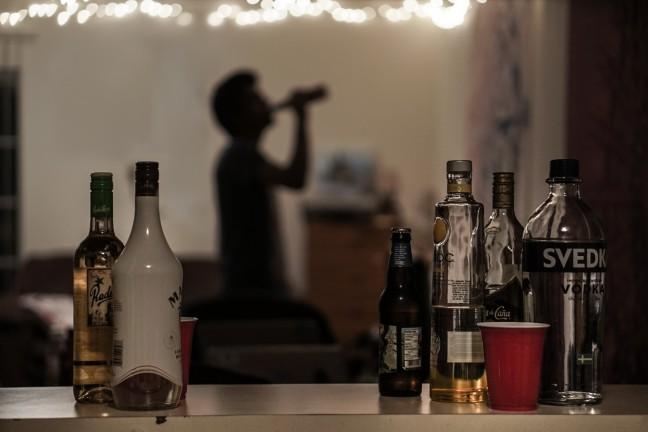Last year, several lawmakers sought to lower the drinking age in Wisconsin. Though it received criticism from Mothers Against Drunk Driving, many lawmakers supported the proposal, and its passage would certainly spell change for drinking culture here at University of Wisconsin.
I’m 20 years old. That means in the U.S., I am not of legal drinking age. But I’m writing this column from Dublin, Ireland, where the minimum legal drinking age is 18. I have been abroad since May, in several different countries, and I have been of legal drinking age in all of them.
I won’t lie — I like being of age, if for no other reason than it’s nice to be able to order a glass of wine with dinner or go to a pub Thursday night with a couple friends.
My impression of drinking culture outside the U.S. has been that because the drinking age is lower, drinking doesn’t seem to be as taboo as it is in the U.S. I think people derive a certain level of thrill from having to sneak around, trying not to get caught, which ultimately could lead to more dangerous behavior. If the minimum legal drinking age was lower, as with many places in Europe, or nonexistent, as the case with China, there may be less of that “thrill” aspect to drinking, thereby leading to more responsible choices.
Furthermore, given that in the U.S., 60 percent of 18 year-olds, 70 percent of 19 year-olds and 77 percent of 20 year-olds report some level of alcohol use, it would make sense to simply provide young adults with the necessary resources to be safe. In the same way that abstinence-only sexual education has been proven ineffective, it’s arguable that enforcing an MLDA of 21 only leads to reckless, uninformed underage drinking. In a sense, legalization could lead to safer regulation.
At least, that was the column I wanted to write. My bitterness toward having to go back to Madison in January when I will still be 20, having just lived for 7 months of legal age, came out and I wanted to write a column that said “Lower the drinking age! It’s better for everyone!”
But the reality is, it’s not.
UW public affairs professor Jason Fletcher recently published a paper exploring the effects of legal alcohol access on participation in risky behaviors associated with drinking. Fletcher explored what the effects of lowering the MLDA to 18 might be and entertained the argument that it should be lowered, but ultimately concluded that the results from his study “provide no evidence consistent with this argument and suggest that individuals living with their parents face even higher consequences of legal alcohol access than individuals living away from their parents.”
If the United States lowered the drinking age to 18, this could lead to increased underage alcohol consumption, starting at a lower age, in a sort of “trickle down” effect. According to the U.S. Substance Abuse and Mental Health Services Administration, about 20 percent of Americans aged 16-17 and about 7.4 percent aged 14-15 report having consumed alcohol in the past month. These figures pale in comparison to those from the European Monitoring Centre for Drugs and Drug Addiction, which indicate that about 38 percent of European youth aged 15-16 report having consumed alcohol in the past month. The data demonstrate that a lower MLDA bears a correlation with increased underage drinking.
Illegality aside, starting drinking at a young age can have remarkable negative consequences on the body. According to the American Academy of Pediatrics to the American Journal of Public Health to the Office of the Surgeon General, experts agree: Alcohol consumption as a teen can have an extreme impact on brain development in the frontal lobe, can lead to interference in development of skills for emotional regulation and decision making. Earlier engagement in consumption of alcohol is also linked to higher risk of chronic mental health difficulties, such as addiction, depression and propensity for violence.
The MLDA also has a very strong impact on the frequency of alcohol-related traffic accidents and fatalities. The National Highway Traffic and Safety Administration estimates implementation of the MLDA of 21 has lowered the rate of alcohol-related traffic fatalities by 13 percent, saving about 28,765 lives since 1975.
The data speaks for itself: lowering the drinking age would bring more danger to the lives of teens and young adults, as well as those around them.
I really did want to advocate for a lower drinking age — this is an opinion I formed as the sum of my experiences in Madison, other places in the U.S. and places with different drinking cultures around the world. But the research on the topic, which has been conducted by experts using proper scientific research methods, does not support my theory, which I created by just going to random pubs for fun.
In situations like these, it is so easy to let the desired outcome cloud proper judgment of what the outcome actually ends up being. It’s important to form opinions and develop theories about society and how it might be impacted by various factors. But it’s even more important to not continue to perpetuate illogical, nonsensical thoughts when they have been proven wrong by hard facts and research.
Cait Gibbons (cgibbons@badgerherald.com) is a junior studying math and Chinese.


